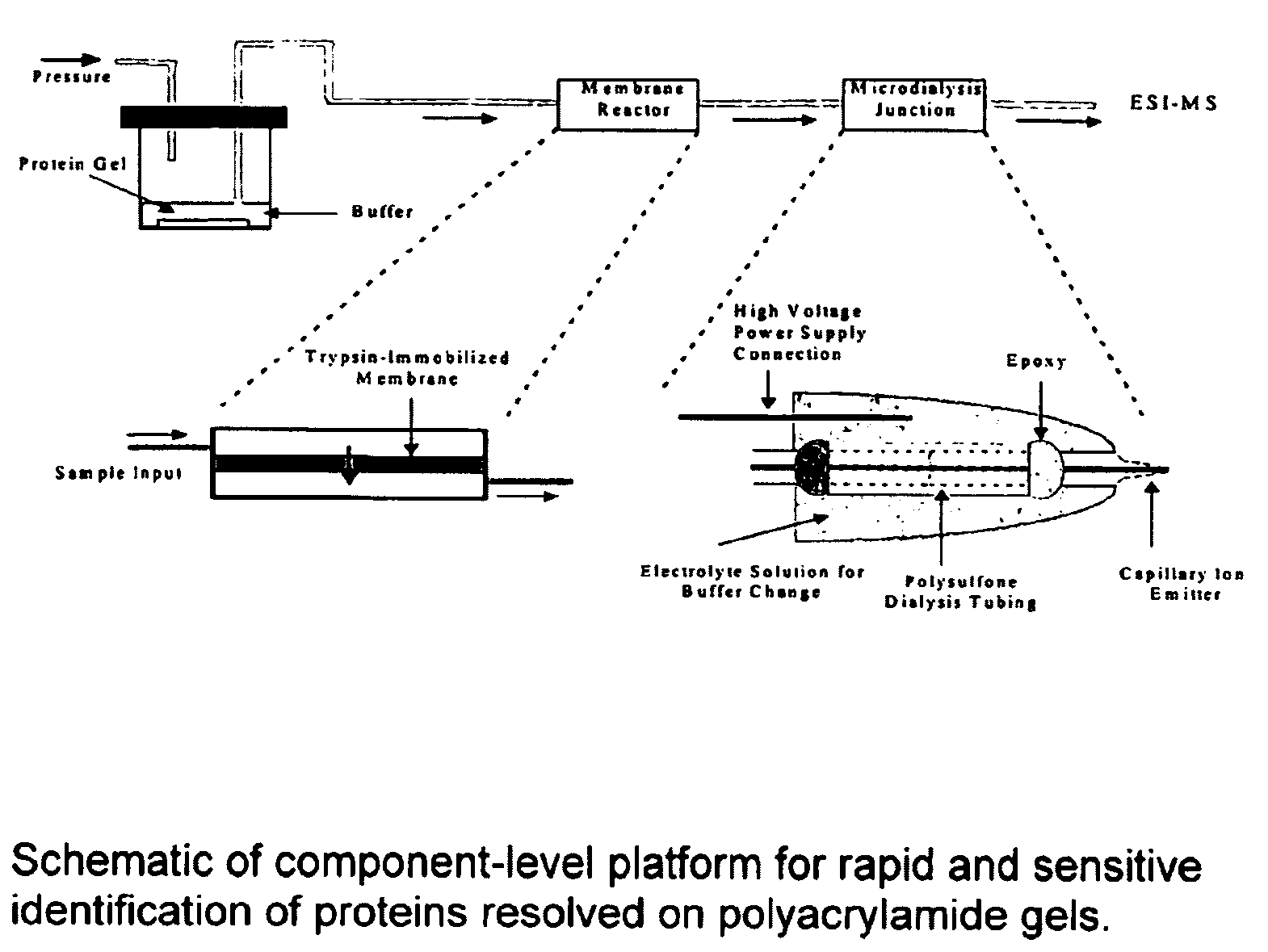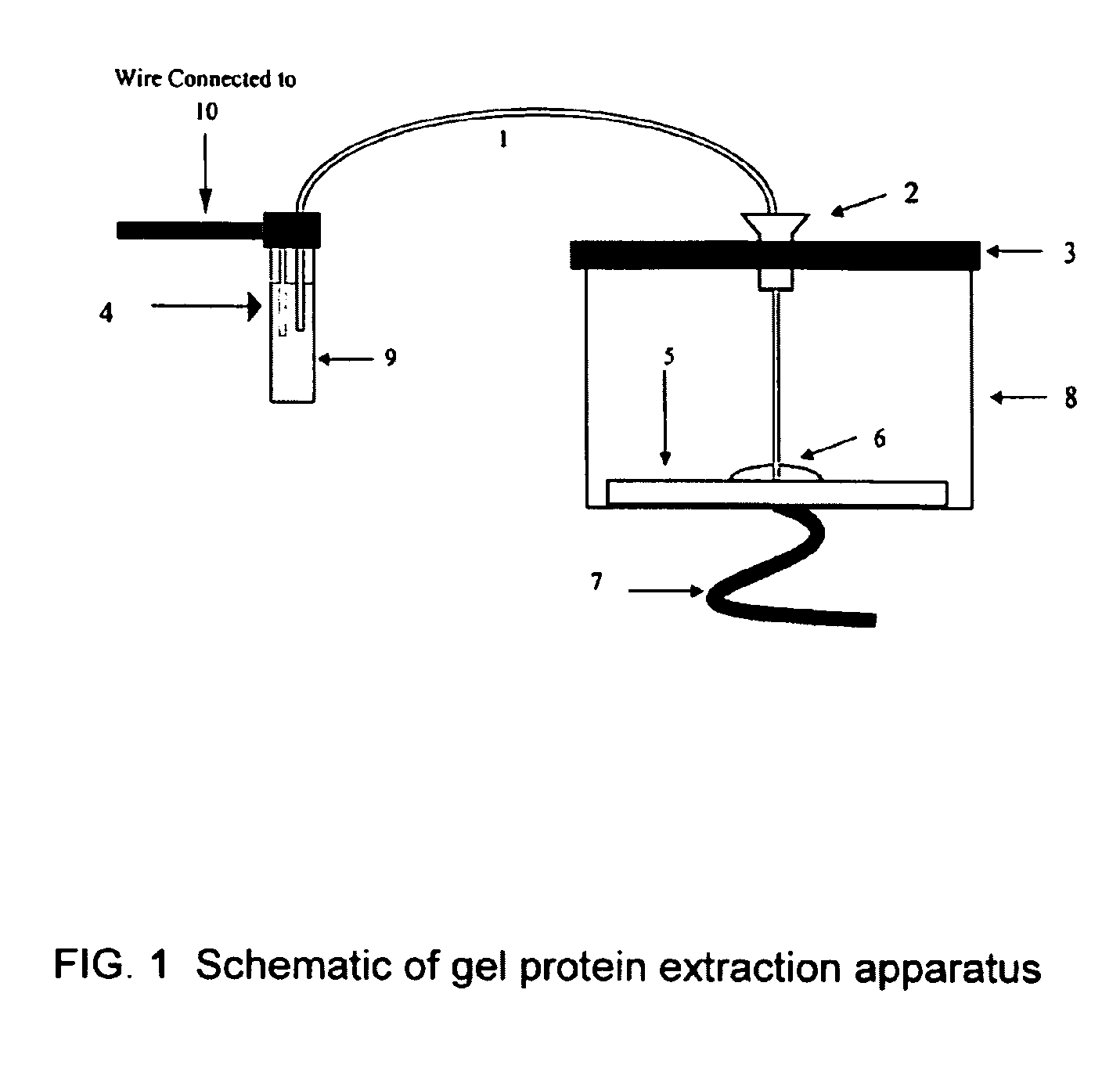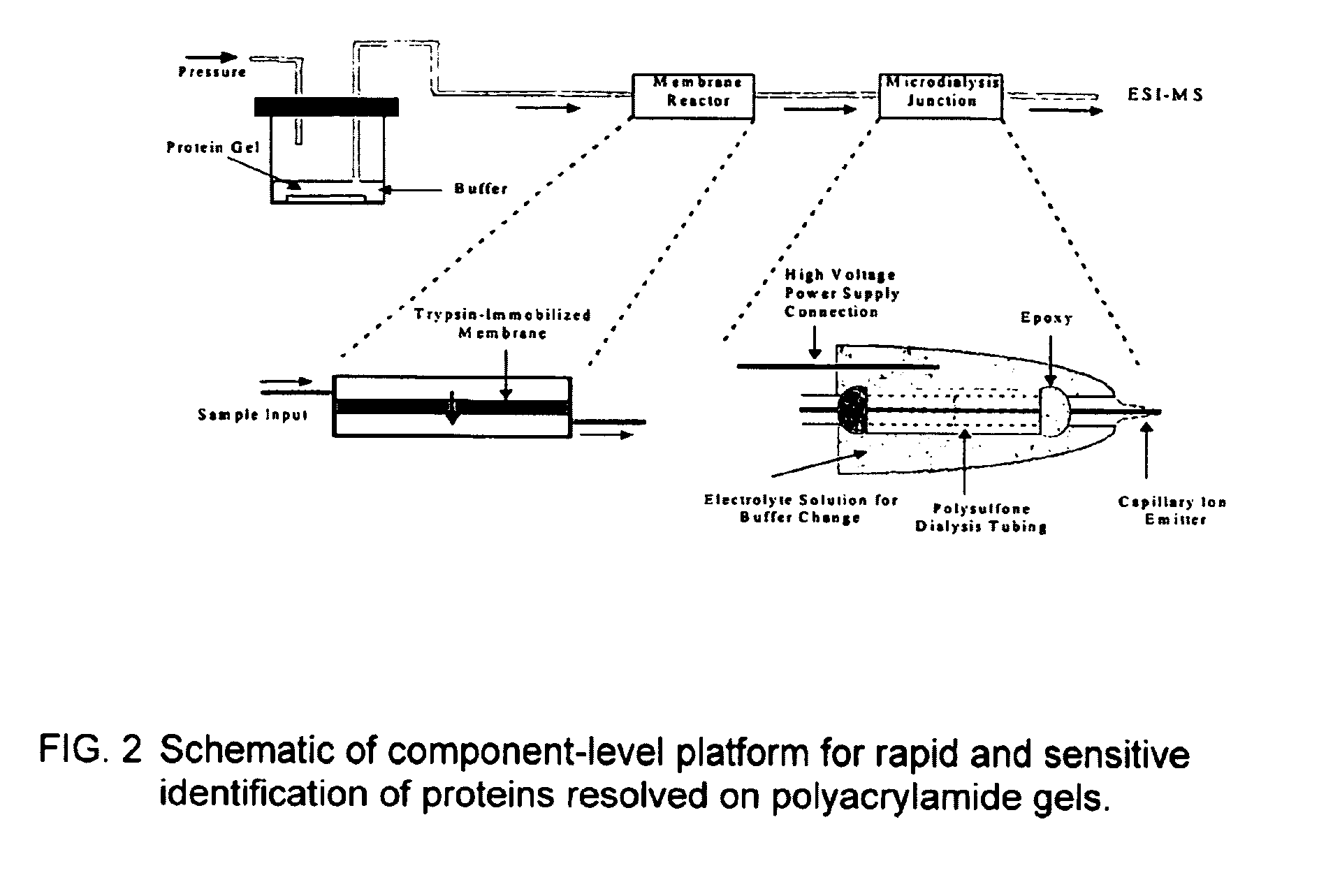Microfluidic apparatus for performing gel protein extractions and methods for using the apparatus
a gel protein and microfluidic technology, applied in the direction of fluid speed measurement, diaphragm, electrolysis, etc., can solve the problems of less distinct protein spots, poor reproducibility, and time-consuming procedures, and achieves rapid and effective protein transfer, large potential drop, and high electric field strength
- Summary
- Abstract
- Description
- Claims
- Application Information
AI Technical Summary
Benefits of technology
Problems solved by technology
Method used
Image
Examples
example 1
[0100]As shown in FIG. 3, a protein loading of 100 ng of SDS-cytochrome C complex is extracted from polyacrylamide gel and monitored by UV absorbance at 280 nm. The results are compared with capillary zone electrophoresis (CZE) of protein sample containing SDS-cytochrome C complex with a concentration of 0.5 mg / ml. Thus, the concentration of extracted SDS-cytochrome C complex is estimated to be around 0.25 mg / ml inside a solution plug of 50-100 nL. The migration time of extracted cytochrome C complex to reach the UV detector is approximately 7.4 minutes and slightly longer than that obtained from CZE. UV absorbance detection scarcely reveals the presence of coomassie blue at 280 nm, while at 214 nm a broad peak is noticed prior to protein complexes.
[0101]Based on our estimations regarding the concentration (0.25 mg / ml) and the volume (50-100 nL) of extracted cytochrome C complex, approximately 12.5-25% of cytochrome C from a protein loading of 100 ng is recovered within 2 minutes of...
example 2
[0102]The results summarized in FIG. 5 further demonstrate the ability to rapidly transfer the SDS-cytochrome C complex over a wide range of protein loading, from 5 μg to 50 ng. Peak height of extracted protein complexes decreases with decreasing protein loading on polyacrylamide gel. However, the extent of decrease in peak height is reduced at low protein loadings as the size of a protein spot shrinks with decreased protein loading. The results also demonstrate the ability to extract higher molecular weight proteins such as ovalbumin and β-galactosidase with molecular mass around 45 and 116 kDa, respectively. The peak heights of extracted ovalbumin and β-galactosidase from a gradient gel are about half of those measured from cytochrome C at various protein loadings. However, the UV absorbance of denatured cytochrome C measured at 280 nm is two and four times of those obtained from β-galactosidase and ovalbumin at the same weight concentration, respectively.
example 3
[0103]Denatured and reconstituted cytochrome C at a concentration of 1 mg / ml is introduced into a μ-trypsin membrane reactor at sample flow rates of 0.3, 0.2, and 0.1 μl / min. The corresponding digestion times inside the membrane reactor are 3, 5, 10 minutes, respectively. At room temperature, various degrees of the cytochrome C digestion are observed from partial digestion at 0.3 μl / min to near complete digestion at 0.1 μ / min (see FIGS. 6A, 6B and 6C). Presence of the cytochrome C envelope is quite obvious at a flow rate of 0.3 μl / min. In comparison with solution-based trypsin digestion, the membrane digestion is at least 500-1000 times faster than solution digestion and exhibits the advantage of avoiding autolytic interference from the proteolytic enzyme in the mass spectra.
[0104]To investigate the effect of reaction temperature on protei digestion, the membrane reactor is placed on top of a hot plate. The ambient temperature surrounding the membrane reactor is increased to 40 and ...
PUM
| Property | Measurement | Unit |
|---|---|---|
| Fraction | aaaaa | aaaaa |
| Fraction | aaaaa | aaaaa |
| Thickness | aaaaa | aaaaa |
Abstract
Description
Claims
Application Information
 Login to View More
Login to View More - R&D
- Intellectual Property
- Life Sciences
- Materials
- Tech Scout
- Unparalleled Data Quality
- Higher Quality Content
- 60% Fewer Hallucinations
Browse by: Latest US Patents, China's latest patents, Technical Efficacy Thesaurus, Application Domain, Technology Topic, Popular Technical Reports.
© 2025 PatSnap. All rights reserved.Legal|Privacy policy|Modern Slavery Act Transparency Statement|Sitemap|About US| Contact US: help@patsnap.com



